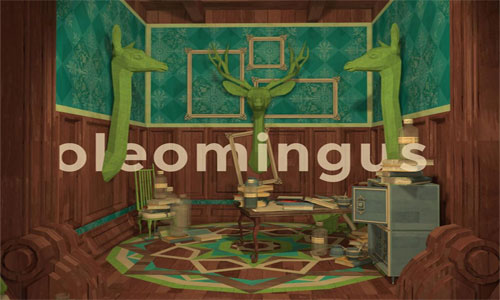
Till date, SketchUp has made a remarkable name as a simple and easy 3D designing tool. As the time goes, the software application pushes its boundary. Designers start using the 3D tool in fields other than known ones. SketchUp as a game environment developer is an added application that evolves gradually in the gaming industry. Professional developers love SketchUp as it offers a trouble-free way of designing complex models. The use of SketchUp in the gaming industry has already been started by Studio Olemingus – an independent game studio introduced by Dhruv, a designer and SketchUp artist, and Kevin, a programmer.
Get started with SketchUp
Dhruv, the small town boy from Chala in Gujarat, is the man behind this innovative thought of using SketchUp as a game developer. He learned SketchUp in 2009-10 as a part of his course. He goes deeper to know how to use the 3D tool in an innovative way like no other does. He used the tool for outlining a gallery for the first time and came to know that the file size generated by the application is less than the other software. The designing is rather simple to understand and to craft. The software application has become an inevitable part of his designing since then.
From outlining just a gallery to developing gaming environments, the journey was a learning one that sharpens his skills and makes him comfortable with the features and plugins. For Studio Olemingus, SketchUp is the main crafting tool that completes the base of the gaming environment flawlessly. The work, though, follows a few steps – developing meshes in SketchUp, painting them with textures designed in Photoshop, and finally compiling them in Unity.
The game ‘Somewhere’:
Somewhere – the game explores the mythical stories of India that enrich the country’s culture. It is an effort to bring back those strange folklores that faded away from the time. The stories are beautifully represented through Kayamgadh – the story teller of the game. The narrative-based game is new in its genre and brings a different perspective from the conventional ones. The game is an escape to the forgotten stories that revealed the India decades back.
The modeling tools that have been used for developing a gaming environment:
Scaling: Resize plays a very important role in this field, and scaling tool helps designers to modify the size that fits in the environment. Studio Olemingus has used its creativity and resized small objects to bring a new shape in its design. In this way, they turn tooth brush into trees and teacups into boulders in a landscape.
Repetition: Repetition modeling tool helps you create homogeneity in your design. The parts that do not need to identify as a single object can use repetition tool. Repetition tool is excessively used in developing a forest environment and a wall structure where homogeneity prevails.
Color and Textures: Though Studio Olemingus has used Unity for color and texture, it creatively used texture mapping with SketchUp Paint Bucket tool for prototyping objects with different colors and textures.
Follow Me Tool: Follow Me Tool works as a loft tool to develop a surface that stretches across the edge. The Studio uses this tool in two different ways – radial symmetry and symmetry across the loft axis.
Terrains: Generally, line, polygon, scale and move tools have been used t carve out the terrains in the design. Designing these is easier in SketchUp and takes less time than the other applications.

SketchUp Extensions: Studio Olemingus use ThomThom’s QuadFace Tools to modify the geometry with adding subdivisions and unsmooth faces. CLF Shape Bender by Chris Fullmer helped the team create leaves by cut out surfaces. Tree maker has been used for creating small plants and leaf components.
Studio Olemingus explores SketchUp in a new way like no other did before. The tools and features of the 3D modeling software application have the potential to design a complete gaming environment in an easy way.
- Cover Story
-
 SketchUp Can Help You Win Interior..
SketchUp Can Help You Win Interior.. -
 Best Laptops for SketchUp
Best Laptops for SketchUp -
 How to Resize Textures and Materials..
How to Resize Textures and Materials.. -
 Discovering SketchUp 2020
Discovering SketchUp 2020 -
 Line Rendering with SketchUp and VRay
Line Rendering with SketchUp and VRay -
 Pushing The Boundary with architectural
Pushing The Boundary with architectural -
 Trimble Visiting Professionals Program
Trimble Visiting Professionals Program -
 Diagonal Tile Planning in SketchUp
Diagonal Tile Planning in SketchUp -
 Highlights of some amazing 3D Printed
Highlights of some amazing 3D Printed -
 Review of a new SketchUp Guide
Review of a new SketchUp Guide
- Sketchup Resources
-
 SKP for iphone/ipad
SKP for iphone/ipad -
 SKP for terrain modeling
SKP for terrain modeling -
 Pool Water In Vray Sketchup
Pool Water In Vray Sketchup -
 Rendering Optimization In Vray Sketchup
Rendering Optimization In Vray Sketchup -
 Background Modification In sketchup
Background Modification In sketchup -
 Grass Making with sketchup fur plugin
Grass Making with sketchup fur plugin -
 Landscape designing in Sketchup
Landscape designing in Sketchup -
 Apply styles with sketchup
Apply styles with sketchup -
 Bedroom Making with sketchup
Bedroom Making with sketchup -
 Review of Rendering Software
Review of Rendering Software -
 Enhancing rendering for 3d modeling
Enhancing rendering for 3d modeling -
 The combination of sketchup
The combination of sketchup -
 Exterior Night Scene rendering with vray
Exterior Night Scene rendering with vray





